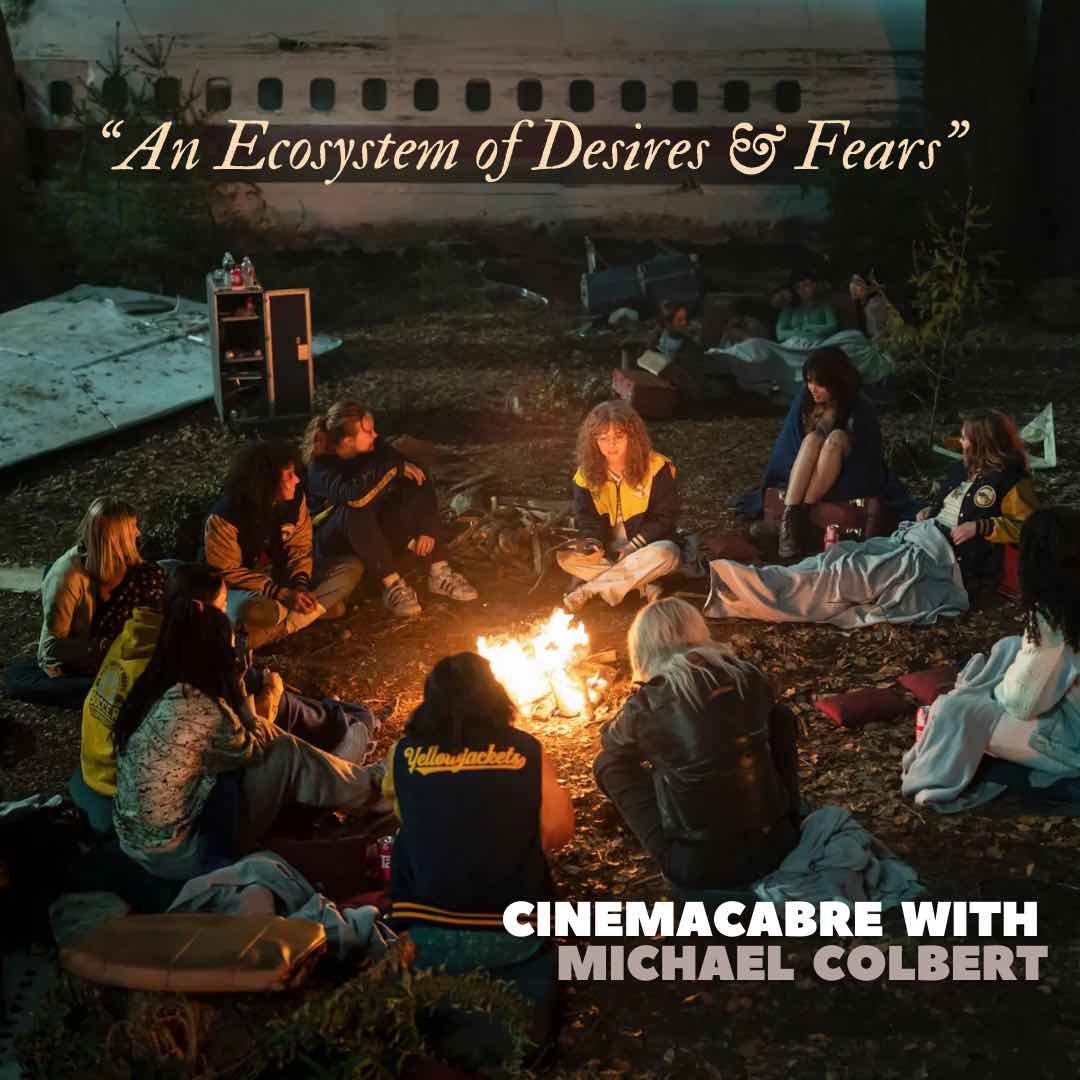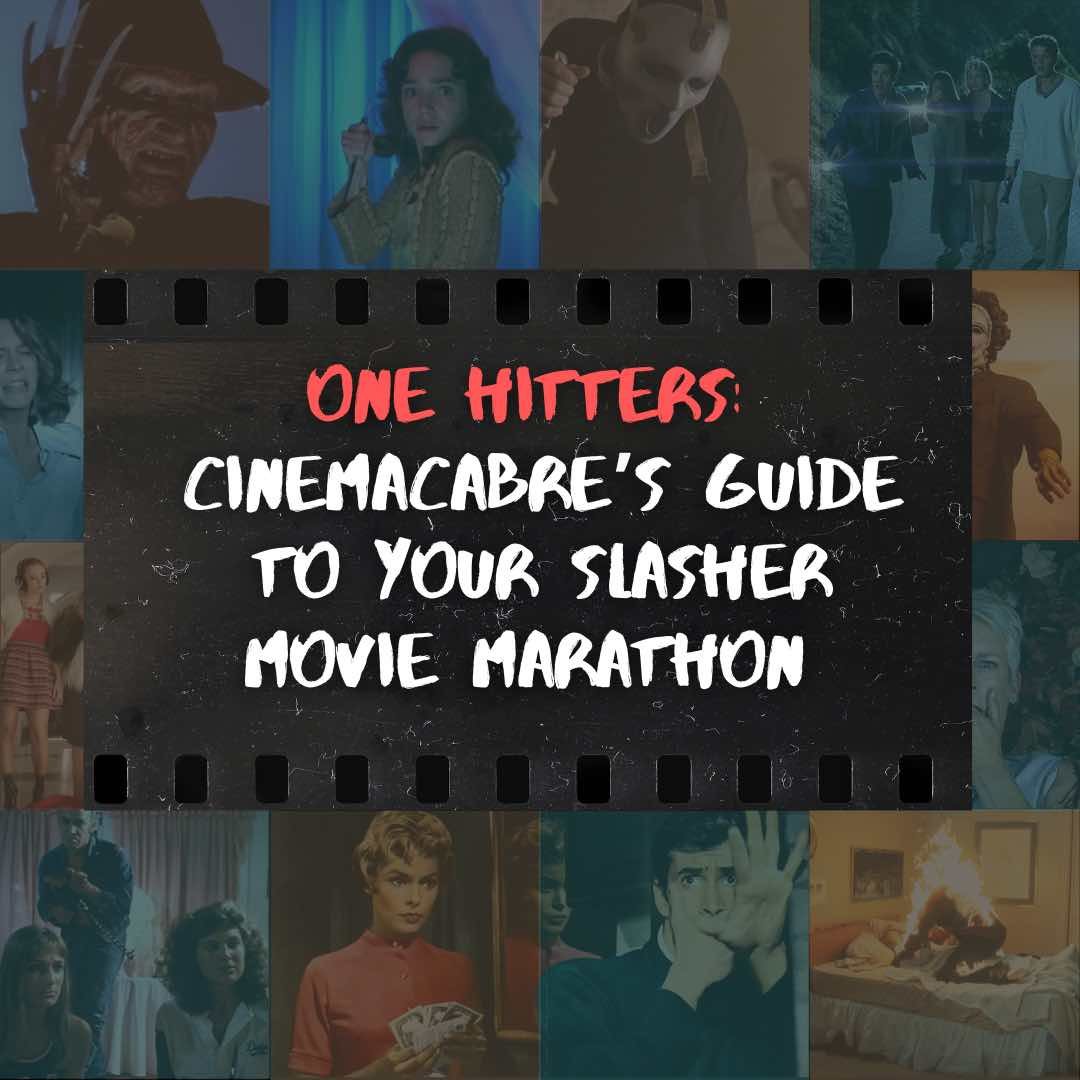Cinemacabre
A walk down the dark halls of cinematic horror with Michael Colbert

When the Nostalgic Looks: Goodbye to All Those Horrors
It's same feeling as watching scary movies. You can absorb the terrors through the buffer of your television screen. You can watch the characters stumble onscreen and say the monster's name one last time.

Model Friends: Monstrous Control in “House of Wax”
When I was leaving Wilmington, a friend said she wished she could keep all her friends in her closet. I’ve always been a collector, holding onto unexpected mementos in an attempt to hold the past.

Superreflections: Jump Scares & “Sinister”
In movies, the writer is always much more confident about their artistic career. Such is the case, to the Oswalt family’s peril, in Scott Derrickson’s 2012 film, Sinister. Ellison Oswalt (Ethan Hawke) has moved his family to the country to investigate a serial killer for his next book with hopes that this might be the case to resuscitate his career. The film opens with haunted house tropes we know too well: a warning comes from the police; husband and wife talk about how this move has to be different from the last one; the daughter acts creepy painting on the bedroom walls, says she doesn’t want to be here.

Onibaba and the Roots of Evil
A retelling of a Japanese fable, Kaneto Shindo’s Onibaba follows two women waiting out the war in the plains of fourteenth-century Japan. To survive, the women have been killing men lost in the fields and trading their gear for food. The bodies, they feed into the pit, and at night they retreat beneath the thatched roof of their hut, ravenously eating before stripping into bed together.

Horror Bottles: Atlanta’s Famous “Teddy Perkins”
Bottle episodes are like, well, putting one of the show’s characters in a bottle. The writer in me thinks if the series is the novel, bottle episodes are the perfect short stories. They envision alternate worlds for a moment, oftentimes without becoming encumbered by the show’s main plotlines.

Family Gravity in The Visit
The film packs in all sorts of horror devices—abjection, a disgust and unease towards aging—all to ruminate on this anxiety about family. When we’ve orbited out of the core family’s gravity, what pains will it take to realign?

Wilmywood Gets Its Requel
Sidney (Neve Campbell) is out running, hair pulled back. We have the sense she’s escaped town and gotten her life together. The sky sunny, the river behind her clear, in Scream she might be in California, but she’s being filmed in North Carolina, in my city, running on my route. We might’ve been able to high five when we passed each other.

An Ecosystem of Desires & Fears
While Yellowjackets does certainly represent traumatic events—a plane crash, wolf attacks, a year and a half in the woods—it seems more interested in the formation of a collective identity in the future through this shared past.

Complex Constellations: On Death Proof
I’ve found myself unable to figure it out completely, to write this film off as “bad.” Do the stylization and the splitting of the film’s narrative, telling two stories in one, guide us to read this film as a criticism of grindhouse movies?

Writer Pains: Creativity and Brutality in American Horror Story: Red Tide
Red Tide remixes vampire lore with crazed artist myths, breeding this notion that some people are born with talent and others aren’t—eschewing the common MFA adage that writing is a war of attrition, and those who ultimately publish are those who never give up.

One Hitters: Cinemacabre’s Guide to Your Slasher Movie Marathon
It’s been a spooky October for the books, and I have the Cinemacabre Month of Mayhem to thank; For this final week, I combed through Twitter-sourced slasher recs. Here, I offer something of a Cinemacabre horror movie marathon guide. Watch if you dare.

Making a Legend: Candyman, Revisited
In 1992, the camera looks from the sky, an aerial view tracking the highways that divide the city, the impeccable minimalist score by Philip Glass underscoring a general unease. If the white gaze emphasizes the divide of the city, in 2021 the camera flips the urban landscape on its head, projecting views from the ground up on prominent Chicago landmarks, vanishing into the clouds.

Homebound Werewolves
Ginger Snaps is a feminist hit, equal parts horrific and ironic. John Fawcett brought screenwriter Karen Walton on “to write the film she’d like to see.” What emerges is horror wielding some of its best tools — a certain level of genre-awareness, monster elements poking holes in our society, some parody that sinks us into the developing terror of the film.

On Burning
Crisp, understated drama prevails in Lee Chang-dong’s 2018 film Burning, an adaptation of the Haruki Murakami story “Barn Burning.” The film operates in a tradition outside of horror, slowly mounting dread.

Resurrecting the Killer: Supernatural Forces and Mass Murderers in Fear Streets
In bad horror, people get stuck in elevators with the devil. A cop that looks like P!nk tries to find a lost child in a town cursed by mine fires. Bad horror movies are so much more fun to watch together. They’re an event, a drinking game. If you ever actually feel afraid, then sure as a jump scare, there will be some line, some cheesy edit or low-rent demon to make you laugh in a minute, just you wait.

Misery Material: Tactility and Suffering in Robert Eggers’s The Witch
Robert Eggers’s The Witch dramatizes the family’s dissolution and the drudgery of early Massachusetts with Pantone’s 2021 color of the year — Ultimate Gray.

Sometimes People Should Be Swindled
Los Espookys feels like this joyous playtime, operating in a surreal mode of scam artists and lowkey magic.

A World of Ten Minutes Ago or Ten Minutes from Now?
On David Robert Mitchell’s 2014 film It Follows, and the sense of being caught between a familiar childhood and an adolescence that’s slowly becoming known.

The Old Fear of Emerging(Into the Woods)
Yet there’s something massive-feeling about a world grown inaccessible since lockdown, best encapsulated by washed-out black and white shots of tree branches and the sky. The world has gone on, and how do we step back into it?

Oh You Like Ari Aster?
Aster has pulled off (or gotten away with, depending on where you fall) the sort of masturbatory film bro drivel that’s quick to translate to cocktail party eye rolls. Oh, you saw Midsommar twice? Please tell me more about how it reminded you of Coachella.
